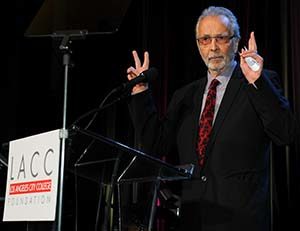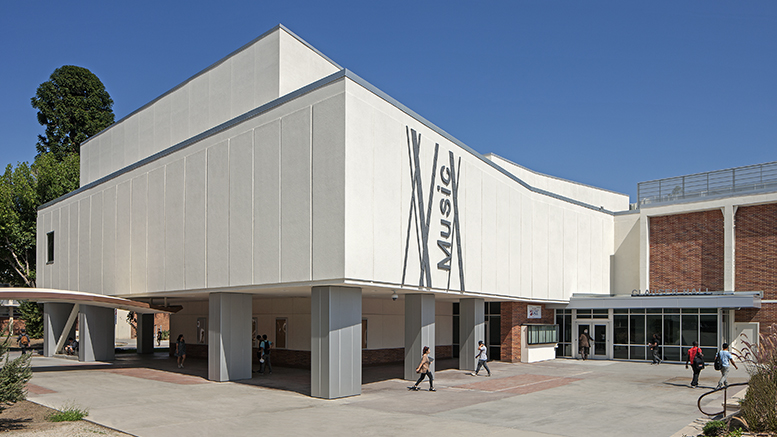The music department at Los Angeles City College (LACC) received scholarship contributions of about $100,000 over the course of a decade starting in the early 2000s from the Herb Alpert Foundation after connecting with Alpert’s brother, David, and sister-in-law, Merryl, both alumni of the city college.
Grateful for this generosity but hoping to build on it, the LACC Foundation about four years ago asked the music department chair if he minded if the foundation become involved. After meeting with David and Merryl Alpert, and then the president of the Alpert Foundation, within weeks they had heard from Herb Alpert and his wife, Lani Hall Alpert, with a proposal.
The Alperts initially offered to give the foundation $100,000 for one year, then called back to raise their offer to $300,000 for three years and finally raised it to $375,000, for a three-year period ending in June 2016. The money went toward a combination of scholarships, private lessons for music majors, and some equipment and maintenance, says Robert Schwartz, executive director of the college’s foundation.
The foundation made sure to report back to the Alperts on how it used the money, honored David and Merryl Alpert at a 2014 gala with an award presented by Herb himself, sent thank-yous and videos showing them how the money had affected the campus, and invited all four Alperts to tour the new music department building, Schwartz says.
“Then, most importantly, we invited Herb and Lani to have a meeting with about 20 of what we call Alpert Scholars, the kids who were the music majors and had been receiving [scholarships],” he says. “Herb and Lani were just blown away with these kids and their backgrounds, and what their dreams were. That made a huge difference in their perception of these kids, beyond the statistics.”
Bigger things to come
That led to even greater interest from the Alperts, who asked what it would take to provide free tuition for all music majors at the school, based on 250 students, which came out to $400,000 per year. The Alperts then stepped forward with a $10 million scholarship endowment gift.
“Herb’s gift became the largest to a community college in southern California,” Schwartz says, adding that the process highlights many how-tos of cultivating long-term donors. “Beyond just giving statistics to people, what’s really key is to find stories on the campus that blend with the affinity of potential donors,” he says. “It’s pretty simple to do if you ask people around campus, ‘Do you have people who could tell their stories?’ We memorialize their stories in writing and videotape students telling their stories on camera, and we find donors who match up.”
This article comes from the current issue of AACC’s Community College Journal. Read it online today.
Schwartz recalls a 2012 study on why donors don’t tend to think of community colleges conducted by Lisa Skari of Highline Community College in Des Moines, Washington. “The conclusion could be summed up by saying: ‘The reason nobody has been giving to community colleges is that nobody has been asking,” Schwartz says, adding that Skari’s study showed two-year alumni are just as likely to give as four-year alumni.

Musician Herb Alpert was a special guest at this year’s Los Angeles City College Foundation gala. (Photo: LACC Foundation)
Yet in 2015, while higher educational institutions received $40 billion in gifts, community colleges only received about 1.5 percent of that amount — despite the fact that they account for about half of students at any one time, according to an estimate provided by the Council for Aid to Education, which maintains data on educational giving.
“It makes no sense, except that community colleges are far behind four-year schools in being set up to ask people for money,” Schwartz says. “We do an alumni newsletter a couple times a year. Our foundation has $22 million in assets and a full-time staff of eight, which is very large. But we don’t do what a University of California or a Cal State or certainly a private institution can do.”

